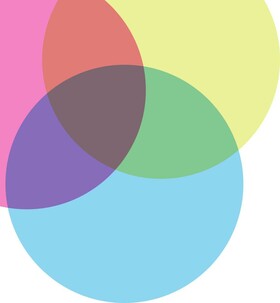Hoax Challenges and other online dangers
Posted on:
What do Educators and Parents need to know about Hoax Challenges?
by Tammy Charko, NPGS Student Support Facilitator
The latest hoax going around social media is the “Momo Challenge." It started in 2016 on “WhatsApp."
It was a phone number associated with the name “Momo” and a picture of a woman with bulging eyes, a beaked nose and long black stringy hair. The conversations began innocently with “wanna play a game” and then the questions would evolve into encouraging the user to engage in self-harm or suicidal behaviors. The momo tells the user that they know where they live and who their parents are and escalates to threatening to harm the user’s family.
The Momo Challenge was initially shut down, but has recently resurfaced on a number of YouTube
videos that has younger audiences such as Peppa Pig, Paw Patrol and Minecraft. YouTube Canada asserts that the Momo Challenge video is not a part of the YouTube community.
How do I know if my child has viewed something disturbing?
Taheer Alibhai, a criminal intelligence analyst with the Edmonton Police Service, says threats like this can be difficult for children to talk about because they don’t want harm to come to their family. However, he says parents can get ahead of potential threats by building an open relationship with their kids. “It’s important for parents to talk to their kids and say ‘Look if something like this happens to you, it’s okay to come to us.’”
Alibhai recommends regularly checking up on your children’s social media usage and setting boundaries on time spent on the apps, privacy settings, and use of location services.
“It’s okay to ask questions about their social media usage or check up on their social media usage and what kind of content they’re not only receiving, but what kind of content they’re uploading as well. In this day and age our faces are always in our devices, so we tend to look at body language,” Alibhai said. “If there is body language that is not typical of your child, if they’re looking at their phone and scrolling through, or they look a little slumped or you get that vibe as a parent that something’s not right here, ask questions, ask lots of questions.”
Montreal cybersecurity expert Terry Cutler in 2018 said, “You’ve got to look out for warning signs. For
example, you pass by the iPad or the iPhone and they’re hovering over it. Or they’re being very
secretive. They look exhausted. Some of these challenges demand that the person wake up at 3 a.m. in the morning."
What parents can do?
“Don’t focus only on Momo, but make sure you know what your child has online access to. More
important is that your child knows not to give out personal [information] to anyone they don’t know,
that no one has the right to tell them to, or make them do anything they don’t want to,” says Cutler.
For YouTube Kids specifically (an app that is separate from YouTube the site), parents can turn search
off, preventing children from searching for content on their own.
The Canadian Centre for Child Protection (CCCP) noted all parents must be aware of what their children watch online and continue to have regular conversations of whom they interact with, even if it is a friend. Parents should also set limits on how much time children spend on their devices. Depending on the child’s age, parents should also communicate some of the risks involved in accessing websites, games or social media sites online.
“Kids tend to get into situations where they feel like everyone’s going to blame them for an activity,”
Christy Dzikowicz of CCCP previously told Global News. “Maybe they’ve taken a few risks and gotten into a situation where they feel at fault. They need to understand when it’s an adult and a young person, they’re never at fault, no matter what they’ve engaged in at any point in time.”
YouTube executives added YouTube is not for children, and parents should only allow their children to
have a controlled video viewing experience on YouTube Kids. Parents should also note children under 13 are not allowed to have YouTube pages.
Where to find help
If you or someone you know is in crisis and needs help, resources are available. In case of an emergency, please call 911 for immediate help. The Canadian Association for Suicide Prevention, Depression Hurts and Kids Help Phone 1-800-668-6868 all offer ways of getting help if you, or someone you know, may be suffering from mental health issues.
Information summarized by Arti Patel Senior National Online Journalist, Smart Living, Global News and CTV Edmonton Published Thursday, February 28, 2019 12:45PM MST
Tammy Charko is a registered Social Worker. As the Division's Student Support Facilitator, Tammy supports schools, students, parents and caregivers to encourage success in school. Tammy advocates for students and provides a link between students and other community services. Tammy has been a social worker for nearly 20 years and is a mother to four children, three of whom are teenagers.